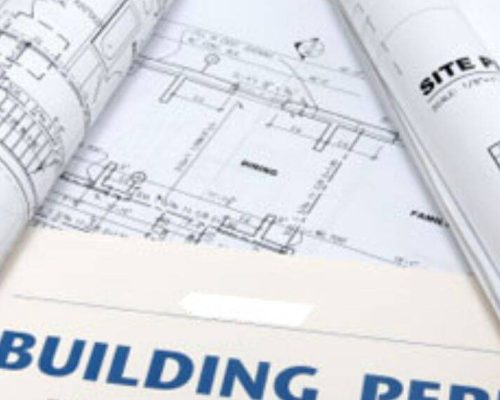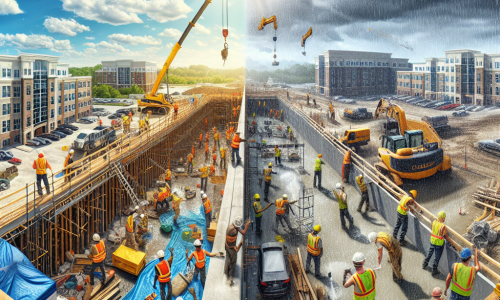Sustainable Building Materials and Practices in Delaware’s Residential Construction Industry
The residential construction industry in Delaware has seen a significant shift towards sustainable building materials and practices in recent years. With a growing awareness of the impact of construction on the environment, homeowners and builders alike are seeking ways to reduce their carbon footprint and create more eco-friendly homes. In this article, we will explore the current trends in sustainable building materials and practices in Delaware’s residential construction industry.
One of the most notable trends in sustainable building materials is the use of recycled and reclaimed materials. This includes materials such as reclaimed wood, recycled plastic, and salvaged metal. These materials not only reduce the demand for new resources but also divert waste from landfills. In Delaware, there has been a rise in the use of reclaimed wood from old barns and buildings for flooring, cabinetry, and furniture. This not only adds character to a home but also reduces the need for cutting down trees.
Another trend in sustainable building materials is the use of energy-efficient materials. This includes materials such as insulated concrete forms, double-paned windows, and energy-efficient appliances. These materials not only reduce energy consumption but also save homeowners money on their utility bills. In Delaware, there has been a push towards using energy-efficient materials in new construction and renovations. The state offers incentives and tax credits for homeowners who incorporate these materials into their homes.
In addition to using sustainable materials, there has been a shift towards implementing sustainable practices in the construction process. This includes using green building techniques such as passive solar design, rainwater harvesting, and greywater recycling. These practices not only reduce the environmental impact of construction but also create healthier and more efficient homes. In Delaware, there has been a growing interest in green building certifications such as LEED (Leadership in Energy and Environmental Design) and ENERGY STAR. These certifications ensure that a home meets certain standards for energy efficiency and sustainability.
One of the most significant challenges in sustainable construction is the high upfront cost. However, in the long run, these investments can result in significant savings for homeowners. This is especially true in Delaware, where the state offers various incentives and tax credits for sustainable construction. For example, homeowners can receive a tax credit of up to $2,500 for installing solar panels on their homes. This not only reduces the cost of sustainable construction but also encourages more homeowners to make the switch.
Another trend in sustainable building practices is the use of green roofs. Green roofs are covered with vegetation, which helps to reduce stormwater runoff, improve air quality, and provide insulation. In Delaware, there has been a growing interest in green roofs, particularly in urban areas. The city of Wilmington has implemented a green roof tax credit program, which offers a tax credit of up to $10,000 for installing a green roof on a commercial or residential building.
In conclusion, the residential construction industry in Delaware is moving towards more sustainable building materials and practices. From using recycled and reclaimed materials to implementing green building techniques, homeowners and builders are making a conscious effort to reduce their environmental impact. With the support of the state through incentives and tax credits, sustainable construction is becoming more accessible and affordable for homeowners. As the demand for eco-friendly homes continues to grow, we can expect to see even more innovative and sustainable practices in Delaware’s residential construction industry.
The Rise of Smart Homes: Integrating Technology in Delaware’s Residential Construction

The residential construction industry in Delaware has seen a significant shift in recent years, with the rise of smart homes and the integration of technology becoming a major trend. As technology continues to advance and become more accessible, homeowners are increasingly looking for ways to incorporate it into their living spaces. This has led to a surge in demand for smart homes, which offer convenience, efficiency, and enhanced security.
One of the main reasons for the rise of smart homes in Delaware is the increasing availability and affordability of smart home technology. With the advent of smart devices such as Amazon Echo, Google Home, and Apple HomePod, homeowners can now control various aspects of their homes with just a few voice commands. This has made it easier for people to adopt smart home technology, as it no longer requires expensive installations or complex systems.
Another factor contributing to the popularity of smart homes in Delaware is the growing concern for energy efficiency and sustainability. Smart home technology allows homeowners to monitor and control their energy usage, leading to significant cost savings and a reduced carbon footprint. For instance, smart thermostats can learn a homeowner’s habits and adjust the temperature accordingly, resulting in lower energy bills. This has made smart homes an attractive option for environmentally conscious individuals and families.
In addition to energy efficiency, smart homes also offer enhanced security features. With the integration of smart locks, cameras, and motion sensors, homeowners can monitor their homes remotely and receive real-time alerts in case of any suspicious activity. This has given homeowners peace of mind, especially when they are away from home for extended periods. Moreover, some insurance companies offer discounts for homes equipped with smart security systems, making it a cost-effective investment.
The integration of technology in residential construction has also extended to the design and functionality of homes. Builders in Delaware are now incorporating smart home features into their designs, such as built-in speakers, automated lighting, and motorized window treatments. These features not only add convenience but also enhance the overall aesthetic appeal of the home. As a result, smart homes are becoming a sought-after option for homebuyers in Delaware.
Furthermore, the COVID-19 pandemic has accelerated the demand for smart homes in Delaware. With more people working from home, the need for a comfortable and efficient living space has become a top priority. Smart home technology allows homeowners to create a personalized and comfortable environment, whether it’s adjusting the lighting for a video call or controlling the temperature for optimal productivity. This has made smart homes a desirable choice for those looking to upgrade their living spaces.
The rise of smart homes in Delaware has also had a significant impact on the construction industry. Builders and contractors are now incorporating smart home technology into their projects, and many are even specializing in smart home construction. This has led to a shift in the skills and expertise required in the industry, with a growing demand for professionals who are knowledgeable in smart home technology.
In conclusion, the integration of technology in residential construction has brought about a significant change in the housing market in Delaware. Smart homes offer convenience, energy efficiency, enhanced security, and a modern aesthetic, making them an attractive option for homeowners. With the increasing availability and affordability of smart home technology, it is safe to say that this trend is here to stay and will continue to shape the future of residential construction in Delaware.
Adapting to Changing Demographics: Trends in Multigenerational Housing in Delaware
The residential construction industry in Delaware has seen significant changes in recent years, particularly in response to shifting demographics. One trend that has emerged is the increasing demand for multigenerational housing. This type of housing, which accommodates multiple generations living under one roof, has become more popular as families seek to adapt to changing economic and social realities.
One of the main factors driving the demand for multigenerational housing is the rising cost of living. In Delaware, as in many other parts of the country, the cost of housing has been steadily increasing. This has made it difficult for families to afford separate homes for each generation, leading them to seek alternative solutions. Multigenerational housing offers a cost-effective option, allowing families to share expenses and resources while still maintaining their independence.
Another factor contributing to the popularity of multigenerational housing is the aging population. As the baby boomer generation reaches retirement age, many are choosing to downsize and move in with their adult children. This has led to an increase in demand for homes that can accommodate multiple generations, with features such as first-floor master suites and separate living areas becoming more common.
In addition to economic and demographic factors, there has also been a cultural shift towards multigenerational living. In many cultures, it is common for multiple generations to live together and support each other. This trend is now being embraced by more families in the United States, as they recognize the benefits of having multiple generations under one roof. This includes the ability to share caregiving responsibilities, as well as the opportunity for grandparents to spend more time with their grandchildren.
As a result of these factors, the residential construction industry in Delaware has been adapting to meet the demand for multigenerational housing. Builders are now incorporating features such as separate entrances, additional living spaces, and flexible floor plans into their designs. This allows families to have their own private spaces while still being able to come together for shared activities.
One popular type of multigenerational housing is the accessory dwelling unit (ADU). These are small, self-contained units that are built on the same property as the main home. ADUs can be used for a variety of purposes, such as housing aging parents or providing rental income. In Delaware, there has been a recent push to make it easier for homeowners to build ADUs, with some cities and towns offering incentives and streamlined permitting processes.
Another trend in multigenerational housing is the rise of the “granny flat.” These are small, detached units that are built on the same property as the main home, but with a separate entrance and living space. Granny flats are becoming increasingly popular in Delaware, as they offer a way for families to have their own space while still being close to each other.
In addition to these specific types of multigenerational housing, there has also been a focus on creating homes that are adaptable and accessible for all generations. This includes features such as wider doorways, first-floor bedrooms, and zero-step entrances. These design elements not only make the home more livable for older adults, but also for individuals with disabilities.
In conclusion, the demand for multigenerational housing in Delaware is on the rise, driven by economic, demographic, and cultural factors. As a result, the residential construction industry has been adapting to meet this demand, incorporating features and designs that cater to the needs of multiple generations living under one roof. As the population continues to age and economic realities evolve, it is likely that this trend will continue to shape the residential construction landscape in Delaware and beyond.










